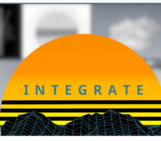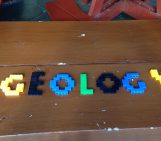
Bridging the gap between student and teacher is not always easy. For students, the educator might seem ‘untouchable’ and inaccessible. A sense exacerbated when assignments are set and they turn out to be new, complex and unfamiliar. In this new installment of our GeoEd column, regular guest blogger Rhian Meara of Swansea University, discusses a simple approach to overcome some of these barriers, which can yield surprisingly positive results.
As teachers, lecturers and professors, it’s easy to forget quite how scary it is to be an undergraduate student. Everything is new – lectures, seminars, practical classes, buildings, cities, and friends. Workloads are increasing and expectations are much higher than at school. We can also be guilty of setting and marking coursework based on our present professional standards including expectations that students will automatically understand what is expected of them. The fallout of this is that students can get overwhelmed, scared to ask questions and plough on despite not understanding what is required of them.
During the last few years, I have taught on a second year module which includes a literature review as part of the continuous assessment. Students attend lectures, workshops and tutorials to learn what a literature review is and how to write their own reviews. However, despite the extensive preparation, there is a communication barrier and a task as simple as a literature review (to the staff) is a monumental and incomprehensible task (for the undergraduates). The students have a tendency to get incredibly hung up on the fact that a literature review is “not an essay” rather than understanding what it actually is and how to complete one.
To counteract this, I have started running an extra tutorial session for my students. In this session, I provide the students with copies my own undergraduate literature review that I completed as part of my undergraduate geology degree at the University of Leicester. The review focusses onto emplacement mechanisms for flood lavas both on Earth and across the Solar System, and was completed during the third year of my degree. In the review, I introduce four models that explain how flood lavas are erupted and transported, critique each model and reach a conclusion as to which model, if any, is most accurate. The majority of the students in the group are physical or human geographers and not avid hard-rock igneous petrologists like I was back in the day, so initially the students are quite intimidated by the subject!
As a group, we then read and discuss the literature review to identify the essential components. These include, but are not limited to, a brief but thorough introduction to the subject, headings and sub-headings, relevant images and maps, appropriate use of references and citations, thorough explanations of the subject material, critical evaluations and conclusions.
Immediate comments from the students included bewilderment at how “professionally written” the work was which led to a useful discussion about academic writing, editing and the appropriate use of jargon. The students also felt that despite their initial intimidation of the subject area, that the review gave them a thorough introduction and explanation of the subject and its associated literature – one of the key aims of a literature review.
At the end of the discussion I asked the students to grade the literature review. As a group the students agreed that the work was a very high quality and merited a 1st class mark (˃70%*). In reality the work had been awarded a 2:1 mark (c. 64%*); however as the work was submitted for a 3rd year module the mark can be translated to a 1st class mark at the 2nd year level. The students were able to see therefore what sort of level they should be aiming at with their own work.
When the students submitted their own literature reviews, I was pleased to see that most of the elements that we discussed had been included into their work. Subjects were clearly introduced and explained, relevant images were used to highlight arguments, ideas were critically discussed and logical conclusions were reached.
Feedback from the students noted that the experience of seeing my own work was incredibly useful as it allowed them to see clear examples of similar work. The students now understand what expectations I have for them in the 2nd year of their undergraduate degree based on my own experiences (do as I say, and as I do!). The tutorial also allowed the students to better understand the process of researching and academic writing.
Getting to see and read through a staff member’s work was very informative. It helped me to understand the level at which to pitch my own work and how the use of appropriate figures, even within essays, could improve the overall quality of the piece. I also found that it broke a perceived wall between the complicated published articles and undergraduate work as it showed how the skills I’m learning now can help with more advance writing in the future.” (Ben, 3rd year student)
Getting an example of a literature review from my tutor was not only useful as a tool, but felt more personal. Allowing me to ask questions I wouldn’t have, if we didn’t have her work as an example.’ (Tom, 2nd year student)
It was a great help to see a good example of a literature review because I had no idea how to even start! I liked the fact that I could refer back to the example for guidance during the process of writing my own literature review, and I believe that I would have had much worse marks without the possibility of seeing an example beforehand.” (Ffion, 2nd year student)
I ran this tutorial last year for the first time and was pleased with the results. This academic year, the original students who are now in their 3rd year have asked to continue the practice as they write their independent research dissertations. During individual and group tutorials I have shown the students my undergraduate research project on the geochemistry of the Siberian Traps lavas and my PhD thesis on tephrochronology in Iceland. Again, feedback from the students has been positive as they appreciate seeing and comparing with their supervisor’s undergraduate work.
The only negative element of this experience was needing to ensure that students did not re-use the same topics for their own projects as this would be considered as plagiarism. However as previously noted, the academic background of the students somewhat precluded this.
Finally, a piece of advice: if you want to share your work with your students, make sure you develop a thick skin! Once the students get going they are surprisingly harsh during the marking and critiquing element of the tutorial!
By Rhian Meara, Physical Geography and Geology Lecturer at Swansea University
* In UK marking schemes, anything given 70% is considered to be of excellent quality.
GeoEd, is a series dedicated to education in the geosciences. If you’d like to share your teaching and educational experiences, anything from formal classroom teaching, through to outreach project ideas, please do get in touch. We always welcome guest contributions to the blog. To pitch an idea for a post, please contact Laura Roberts Artal (the EGU Communication Officer and GeoLog editor) at networking@egu.eu or take a look at our submission page.




